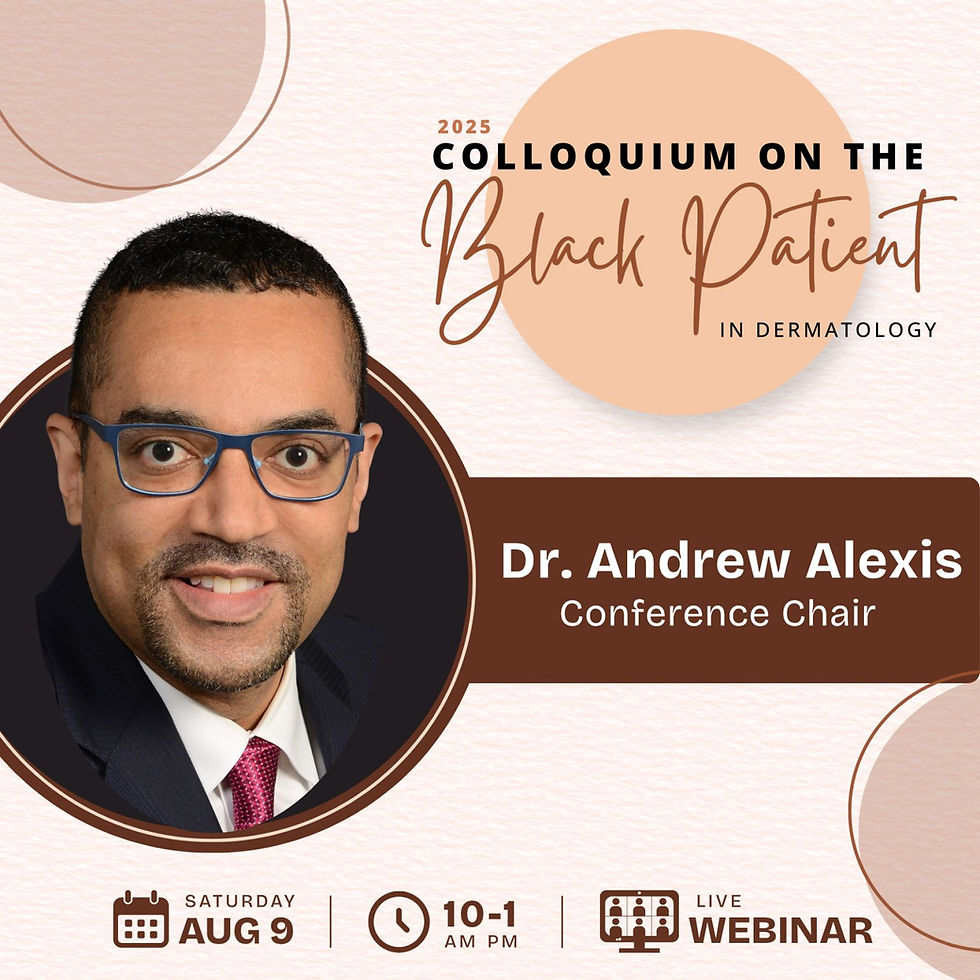Skin Spectrum Summit Toronto 2016: Acne Tx for skin of colour patients
- By Lynn Bradshaw
- Apr 28, 2016
- 2 min read

The treatment paradigm for the management of acne is similar when treating skin of colour versus Caucasian patients, Dr. Sam Hanna reported during a presentation at the 2nd annual Skin Spectrum Summit in Toronto on Apr. 16.
“There are many options available for the management of acne sequelae, but when treating skin of colour patients every single [acne treatment] carries different risks than when we treat patients with lighter skin,” Dr. Hanna, a dermatologist in Toronto, said.
“Acne is common across all skin types. I like to initiate therapy for acne early—so that I am not a year, five or 10 years down the road behind the eight ball trying to [treat acne scarring], which we might have been able to prevent,” he said. He emphasized that preventing acne scars is easier than treating acne scars.
“Scar treatment is available, but it is difficult, expensive and has risks,” he said.
Dr. Hanna said during his presentation that topical retinoids remain the mainstay of early topical therapy. He noted, however, that he is cautious about starting retinoids across the board with all patients.
“For skin of colour patients, retinoids help with early comedone formation and might also help in terms of pigmentary change,” he added.
A benzoyl peroxide/clindamycin combination can augment benefit with small additional irritation, but clinicians should be aware of the potential for benzoyl peroxide sensitivities, said Dr. Hanna. “Some people cannot tolerate it and if you use that in darker skin types then these patients will be even more prone to hyperpigmentation.”
Dr. Hanna indicated that he prefers benzoyl peroxide-containing washes rather than gels. “I find the washes to be just as effective and less irritating. Also, [there are fewer] bleaching issues,” he said.
For skin of colour patients, azelaic acid is a nice adjunct, said Dr. Hanna. “It is not necessarily used as widely as other treatments, but the available azelaic acid formulations are helpful for acne treatment. It also seems to help mitigate hyperpigmentation.”
“I really like topical dapsone. It is a niche product. It works well under makeup. There was some data that seemed to suggest that it perhaps could be particularly beneficial for skin of colour patients, but [more research is needed],” he said.
“Chemical peels serve a nice purpose and seem to be well tolerated among people with darker skin,” Dr. Hanna said.
When using oral contraceptives to aid in the management of acne for female skin of colour patients, Dr. Hanna said that clinicians should be cautious regarding the risk of melasma.
Dr. Hanna added that he finds comedone extraction to be helpful, especially before starting a patient on oral isotrenoin. “I find comedone extraction to be important because if I do not do it then the patient will. I have the tools for it, and I do a better job at it.”
Sun protection to prevent hyperpigmentation
The importance of sunscreen use and sun protection should be emphasized, said Dr. Hanna. “One of the things we are worried about is hyperpigmentation and one of the drivers of that pigmentation is UV exposure.”
For more information about the Skin Spectrum Summit or to register for an upcoming summit in Montreal (May 14, 2016) or Vancouver (June 4, 2016) visit www.skinspectrum.ca
Photo credit: Emily Innes-Leroux/The Chronicle



Comments